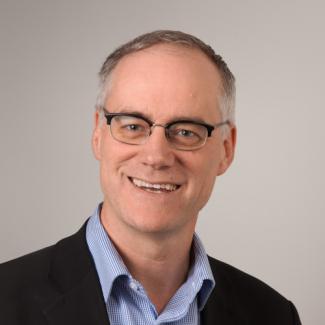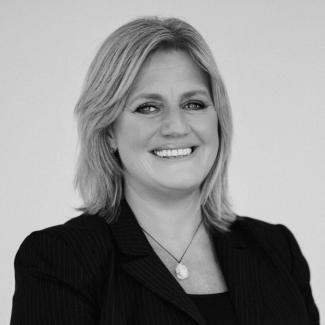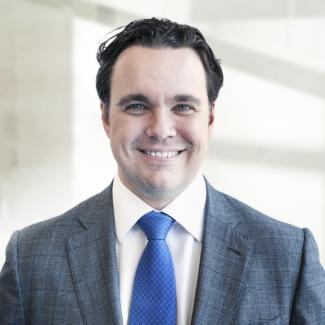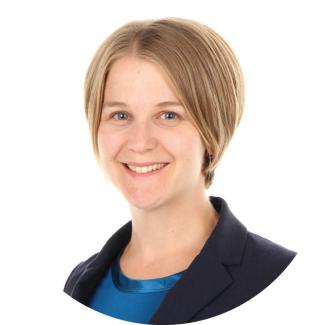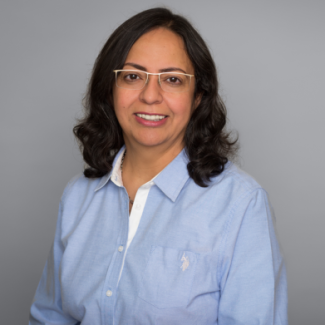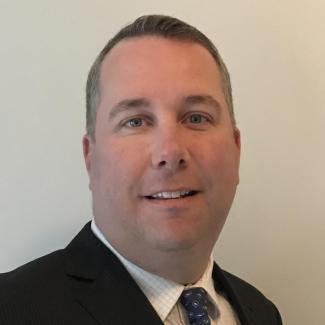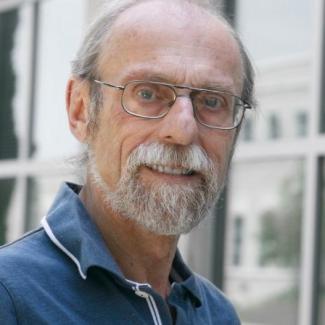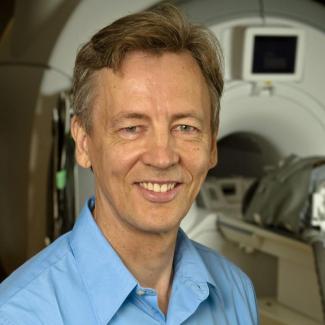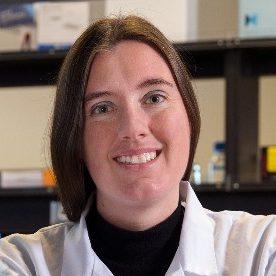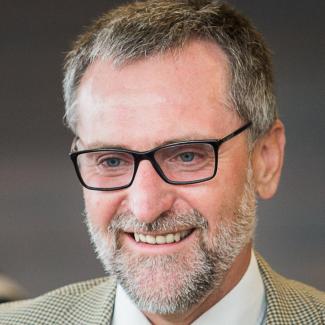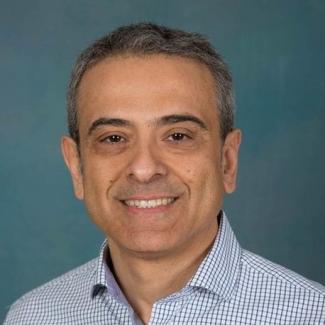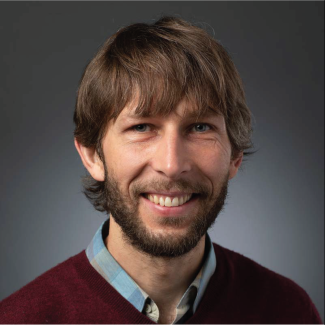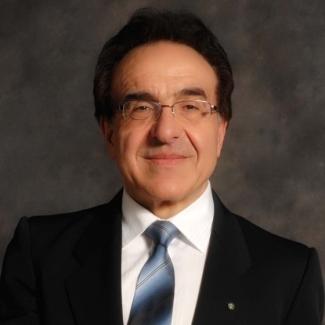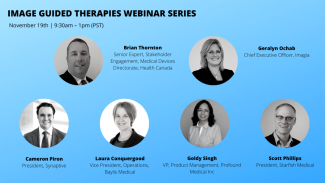
The Image Guided Therapies Webinar Series
Save the date! November 19th | 9:30am – 1pm (PST) or 12:30pm - 4pm (EST)
Along with colleagues from Ryerson University, Sunnybrook Research Institute and the Universities of Toronto and British Columbia, we’re thrilled to announce the second installment of our Image Guided Therapeutics (IGT) webinar series.
The IGT webinar series, launched in June 2020, hosted seven lead academic and research directors from across Canada and the US. Directors like Peter Zandstra, Aaron Fenster and Gabor Fichtinger shared institutional research highlights and overviewed current initiatives. The event has fostered a broad and vibrant international community with keen interests in topics including medical technologies, regulation, science, networking and business.
Join us on November 19th for our second installment! Focused on the industry perspective, we’ve invited industry experts in the IGT space to discuss their journey to commercial success.
The day will include:
- Presentations from leading IGT organizations
- Panel discussion
- Break out rooms to discuss clinical applications of IGT
Mark your calendars and register for our 2nd Image Guided Therapeutics Webinar.
Speakers
Scott phillips
President, Starfish Medical
Scott holds a degree in Engineering Physics from the University of British Columbia. Prior to starting StarFish, he worked in diverse areas such as lithium battery development and manufacturing, UV spectroscopy instrumentation and hi-fi audio speakers. Under his leadership StarFish has grown into a diverse professional organization with clients around the world and 100% focus on medical devices. Scott is a Chair of the LifeSciences British Columbia board, Fellow of The Canadian Academy of Engineering, winner of the EY Entrepreneur Of The Year™ 2017 Pacific Awards Technology category, 2017 recipient of the VIATEC Technology Champion award, and volunteers with Junior Achievement, Entrepreneurs Organization, and University of British Columbia.
Geralyn Ochab
Chief Executive Officer, Imagia
Ms. Ochab currently serves as Chief Executive Officer for Imagia Cybernetics Inc in Montreal which focuses on the application of Artificial Intelligence to cancer detection and diagnosis. Formerly, Ms. Ochab held numerous roles in business development and sales including Executive Business Manager at Toshiba, VP Sales & Marketing of Insception, Canada’s largest cord blood stem cell bank, and as National Sales & Marketing Manager of Emerging Ultrasound, a division of GE Healthcare. In addition, Ms. Ochab was Director of Clinical Business Development at Resonant Medical, a 3D U/S therapy concern, Director Business Development of Medipattern, a 3D breast ultrasound CAD solution company, and also General Manager of Life Imaging Systems, a 3D medical imaging software company.
Cameron Piron
President, Synaptive
Cameron Piron is an industry-recognized leader and innovator in image-guided surgery. Prior to co-founding Synaptive Medical, Cameron was president and co-founder of Sentinelle Medical, a medical device company that developed and manufactured advanced MRI-based breast imaging technologies. Sentinelle grew to over 200 employees and over $20 million in revenues before being acquired by Hologic, Inc. in 2010. Cameron studied systems design engineering at the University of Waterloo, followed by a graduate degree at the University of Toronto in medical biophysics. In 2015, Cameron was named one of the Fast Company’s Most Creative People, was recognized for his leadership in 2016 when Synaptive was named Life Sciences Ontario’s Company of the Year, and was named a finalist for the 2017 Bloom Burton Award in recognition of his contributions to the Canadian healthcare industry. He is a member of Synaptive’s Board of Directors.
Laura Conquergood
Vice President, Operations, Baylis Medical
Laura has been with Baylis Medical since 2002. She is responsible for leading the supply chain, customer service, production, process engineering, equipment, and facility teams at Baylis.Laura has 15 years of experience in the medical device industry, having held positions in research and development, quality, and supply chain. Laura has supported the development of many cardiology devices, including Baylis’ Cooled RF technology for pain management.She has a Bachelor of Applied Science in Mechanical Engineering from Queen’s University.
Goldy Singh
Vice President of Product Management & QA, Profound Medical Inc
Goldy Singh has been in the medical device industry for over two decades. She has secured 510K and CE-mark approvals on a range of complex devices, leading both Quality and Regulatory Affairs for a number of companies, including C.R. Bard and Philips Medical. Most recently as Director of Quality & Regulatory Affairs at Natus Medical Incorporated, she managed a large product portfolio through a series of successfully launched products into the US, Canada and EU. A reviewer of RAPS online university course material, Goldy is also regularly invited to share her unique expertise at industry and peer-attended events.
Brian Thorton
Senior Expert, Stakeholder Engagement, Medical Devices Directorate, Health Canada
With all of the changes that have been initiated in Health Canada’s Medical Devices Directorate, and projects that are being worked on (e.g. Medical Devices Single Audit Program, Global Medical Device Nomenclature, Table of Contents development, etc.), there was a greater need than ever for the Bureau to develop a clear stakeholder engagement plan. Brian Thornton joined the Medical Devices Bureau in May of 2018 to lead the development and implementation of this plan.
Brian brought with him 20+ years of experience managing regulatory affairs in the medical device industry, including a Fortune 500 company. He has excelled in developing strong relationships with his clients in order to facilitate compliance within the industry. Brian’s recent focus has been delivering regulatory based training. His success in this area is due to his ability to present complex issues to diverse stakeholder groups in a clear, concise fashion, while engaging his audience and encouraging discussion.
Since joining the Bureau, Brian has successfully conducted several stakeholder engagement activities. Brian’s in-depth knowledge of the Medical Devices Regulations, awareness of the needs of the medical device industry, and understanding of the needs of the Medical Devices Bureau's various stakeholder groups, has led to this success.
Agenda (subject to change)
|
9:30am - 9:35am |
Welcome Remarks |
| 9:35am – 9:55am |
Scott Phillips, President, Starfish Medical "So you want to develop a new IGT product?" |
| 9:55am – 10:15am |
Laura Conquergood, Vice President of Operations, Baylis Medical Company "Opportunities and Challenges of Scaling up Medical Device Manufacturing in Canada" |
| 10:15am – 10:35am |
Brian Thornton, Senior Expert, Stakeholder Engagement, Medical Devices Directorate, Health Canada "Overview of The New Medical Devices Directorate" |
| 10:35am - 10:50am |
Movement Break Led by UBC's Move U Crew "The Move U Crew is committed to enhancing campus wellbeing. They do this by offering movement breaks in classes, conferences and meetings, hosting guided walks, and helping to coordinate walking challenges. Move U Crew members are “movement specialists” with experience in fitness, dance, stretching and a variety of other recreation specialties. The goal of the Move U Crew is to engage students, staff and faculty and contribute to personal, professional and success on campus and beyond." |
| 10:50am - 11:10am |
Geralyn Ochab, Chief Executive Officer, Imagia "How could AI disrupt Image Guided Therapies" |
| 11:10am - 11: 30am |
Goldy Singh, Vice President of Product Management & Quality and Regulatory Affairs, Profound Medical Inc "Journey to Commercialization" |
| 11:30am - 11:50am |
Cameron Piron, President, Synaptive Medical "Art of Fundraising" |
| 11:50am - 12:30pm |
Panel with all presenters "Looking Towards the Future of Image Guided Therapeutics in Canada" Moderator: Raphael Ronen, Director, Business Development at Sunnybrook Research Institute |
| 12:30pm - 12:35pm | Coffee Break |
| 12:35pm - 1:00pm |
Breakout Sessions 1. Art of Fundraising with Cameron Piron and Scott Phillips 2. Medical Device Regulation with Health Canada's Brian Thornton Separate Zoom links in your registration email. |
Follow us on Twitter! #IGTC2C
"Image Guided Therapeutics: from Conception to Commercialization" - Inaugural IGT Webinar (June 25th, 2020)
June 25, 2020 | 9:30 AM-12:30 PM (Pacific Time)
Virtual Event
Join UBC's Materials and Manufacturing Institute, the University of Colorado, Ryerson University, Sunnybrook Research Institute and the Biomedical Imaging & AI cluster on June 25th for the online webinar "Image Guided Therapeutics: from Conception to Commercialization".
The virtual event will bring together lead academic and research organizations in the field of biomedical imaging to share institutional research highlights and an overview of their current initiatives. The seminar aims to facilitate collaboration and identify new opportunities for partnership. Please join us on June 25th and learn how you can connect with our international and multi-institutional group of directors and researchers.
Speakers
Dr. Aaron Fenster
Imaging Director, Robarts Research Institute, Western University
Dr. Fenster’s area of research is focused on the use of 3D ultrasound in image-guided interventions. He is a Scientist at the Robarts Research Institute, founder and past Director of the Imaging Research Laboratories, Chair of the Division of Imaging Sciences of the Department of Medical Imaging at The Western University, founder and past Director of the graduate Program in Biomedical Engineering, Director Imaging Program, of the Ontario Institute for Cancer Research, Founder, and Centre Director of Centre for Imaging Technology Commercialization. He has published 350 peer-reviewed papers and has 52 patents filed or issued. He is a Fellow of CAHS, IEEE, SPIE, COMP, IOMP, AAPM and CCPM. He held a Canada Research Chair-Tier 1 in Biomedical Engineering from 2000 to 2014. He is the first recipient of the Premier’s (Ontario) Discovery Award for Innovation and Leadership (2007), the Hellmuth Prize for Achievement in Research at the UWO (2008), and the Canadian Organization of Medical Physicists (COMP) Gold Medal Award (2010). In 2013, the International Organization for Medical Physics (IOMP) at its annual meeting named Fenster as one of the 50 international Medical Physicists who have made an outstanding contribution to the advancement of Medical Physics over the past 50 years. In 2020 he received the Order of Ontario.Fenster’s laboratory has been pioneering the development of 3D ultrasound imaging and image-guided interventional systems in radiology, oncology, urology, neonatology and vascular imaging with some successfully translated into clinical use and to companies. Most recently, his team developed 3DUS image-guided interventional systems for prostate biopsy, as well as breast, prostate and gynecologic brachytherapy systems.
Dr. Peter Zandstra
Director, School of Biomedical Engineering & Michael Smith Laboratories, University of British Columbia
Peter Zandstra graduated with a Bachelor of Engineering degree from McGill University in the Department of Chemical Engineering, obtained his Ph.D. degree from the University of British Columbia in the Department of Chemical Engineering and Biotechnology and continued his research training as a Post-Doctoral Fellow in the field of Bioengineering at MIT. In 1999, Dr. Zandstra began his faculty appointment at the University of Toronto’s Institute of Biomaterial and in 2016 was appointed University Professor, the university’s highest academic rank. In July 2017, Zandstra joined the University of British Columbia as the Founding Director the School of Biomedical Engineering and as the Director of the Michael Smith Laboratories. In these roles, he aims to build programs with deeper interactions between the Faculties of Applied Science, Science and Medicine, especially as related to innovative research and training programs.
Peter is the Canada Research Chair in Stem Cell Bioengineering and is a recipient of a number of awards and fellowships including the Premiers Research Excellence Award (2002), the E.W.R. Steacie Memorial Fellowship (2006), the John Simon Guggenheim Memorial Foundation Fellowship (2007), and the University of Toronto's McLean Award (2009). Dr. Zandstra is a fellow of the American Institute for Medical and Biological Engineering and the American Association for the Advancement of Science. Peter’s research focuses on understanding how complex communication networks between stem cells and their progeny influence self-renewal and differentiation, and how this information can be applied to the design of novel culture technologies capable of controlling cell fate.
Dr. Kullervo Hynynen
Vice President, Research & Innovation, Sunnybrook Research Institute, University of Toronto
Dr. Hynynen received his MSC from the University of Kuopio, Finland and his Ph.D. from the University of Aberdeen, UK. He accepted a faculty position at the University of Arizona where he built a therapy ultrasound program and developed several ultrasound devices from ideas to clinical trials and was the first to integrate focused ultrasound transducers with an MRI scanner.He joined the faculty at the Harvard University, and Brigham and Women’s Hospital in Boston, MA 1993. There he founded the Focused Ultrasound Laboratory and developed MRI guided ultrasound surgery methods for clinical testing. These included MRI guided breast tumor, uterine fibroid and brain ablation devices. He transferred the technology to InSightec that is now commercializing them. He and his team discovered how to safely enhance the permeability of the blood-brain barrier (BBB) using focused ultrasound and established the safety and efficacy of the method in pre-clinical models. In 2006 he was recruited to the position of Director, Physical Sciences Platform at Sunnybrook Research Institute and moved to Toronto where he garnered a Tier 1 Canada Research Chair Tier in Imaging Systems and Image-Guided Therapy. In Toronto, he has continued his research on brain treatments by using focused ultrasound for ablation and to enhance the permeability of the BBB. He has been facilitating the clinical testing of thermal ablation of essential tremor and several clinical trials on BBB permeability enhancement. In January 2020, Kullervo assumed the position of Vice-President, Research and Innovation, Sunnybrook Research Institute, Sunnybrook Health Sciences Centre . Dr. Hynynen has published approximately 400 peer reviewed papers on basic and clinical research and has about 30 patents or pending applications many of which have been licensed by industry. He has been the recipient of numerous NIH, CIHR and other agency grant awards, private sector research contracts; served on study sections, editorial boards, and has been extensively involved in commercializing ultrasound technology.
Dr. Stephanie willerth
Director, Biomedical Engineering, University of Victoria
Dr. Willerth, a Full Professor in Biomedical Engineering, holds a Canada Research Chair in Biomedical Engineering at the University of Victoria where she has dual appointments in the Department of Mechanical Engineering and the Division of Medical Sciences. She also holds an appointment with the School of Biomedical Engineering at the University of British Columbia. She serves as the Acting Director of the Centre for Biomedical Research and the Biomedical Engineering undergraduate program at the University of Victoria. She is an active member of the steering committee of the B.C. Regenerative Medicine Initiative and the Stem Cell Network. She also serves as a staff scientist at Creative Destruction Lab. She also was the President of the Canadian Biomaterials Society– serving a three-year term as President-Elect then President and Past President from 2017-2019.
Dr. Gabor Fichtinger
Professor and Cancer Care Ontario Research Chair, School of Computing, Queen’s University
Gabor Fichtinger (IEEE M’04, S’2012, F’2016) received the doctoral degree in computer science from the Technical University of Budapest, Budapest, Hungary, in 1990. He is a Professor and Canada Research Chair in Computer-Integrated Surgery at Queen’s University, Canada, where he directs the Percutaneous Surgery Laboratory (Perk Lab). His research and teaching specialize in computational imaging and robotic guidance for surgery and medical interventions, focusing on the diagnosis and therapy of cancer and musculoskeletal conditions
Dr. Matthew O'Donnell
Professor, Department of Biomedical Engineering, University of Washington Following undergraduate, graduate, and post-doctoral training at Notre Dame and Washington University in St. Louis, Dr. O’Donnell joined General Electric Corporate Research and Development Center in Schenectady, NY in 1980, where he worked on medical electronics, including MRI and ultrasound imaging systems. In 1990, he moved to University of Michigan in Ann Arbor, MI where he held appointments in Electrical Engineering & Computer Science and in Biomedical Engineering. In 1998, he was named the Jerry W. and Carol L. Levin Professor of Engineering. From 1999-2006 he also served as Chair of the Biomedical Engineering Department. In 2006 he moved to the University of Washington in Seattle, WA where he was the Frank and Julie Jungers Dean of Engineering from 2006-2012. He is now Frank and Julie Jungers Dean Emeritus and a Professor of Bioengineering at the University of Washington. His most recent research has explored new imaging modalities, including elasticity imaging, in vivo microscopy, optoacoustic devices, photoacoustic contrast agents for molecular imaging and therapy, laser ultrasound systems, and catheter-based devices. He has won numerous awards, including the Distinguished Alumni Award from the University of Notre Dame, the Achievement and Rayleigh Awards from the IEEE-UFFC Society, the William J. Morlock Award for Excellence in Biomedical Technology from the IEEE-EMBS Society, and the IEEE Biomedical Engineering Award. He is a fellow of the IEEE and AIMBE and is an elected member of the Washington State Academy of Sciences and the National Academy of Engineering.
Dr. Mike Averkiou
Associate Professor, Department of Bioengineering, University of Washington
Mike A. Averkiou is associate professor at the Department of Bioengineering of the University of Washington since 2015. He received a BS, an MS and a PhD in 1987, 1989 and 1994, respectively, all in Mechanical Engineering with specialization in Nonlinear Acoustics/Biomedical Ultrasound, from the University of Texas at Austin. He was a Postdoctoral Fellow at the Applied Physics Laboratory of the University of Washington from 1994 to 1996 and worked on lithotripsy, bubble dynamics, and therapeutic ultrasound. He joined Philips Medical Systems (1996-2005), and worked on diagnostic ultrasound imaging and specifically tissue harmonic imaging, and ultrasound contrast agents. He was associate professor at the Department of Mechanical and Manufacturing Engineering of the University of Cyprus (2005-2015). Mike develops ultrasound imaging and therapy technology for disease detection, improved cancer treatment and monitoring, improved drug delivery to targeted cells, and heart disease. He focuses on transferring innovations from preclinical research into clinical use. He is a senior member of IEEE, Acoustical Society of America fellow and was awarded the Marie Curie Chair of Excellence from the European Commission.
Dr. Ivan M. Pelivanov
Research Associate Professor, Department of Bioengineering, University of Washington
Dr. Vanya (Ivan) Pelivanov is a Research Associate Professor at the Department of Bioengineering of the University of Washington. He has worked in the areas of photoacoustics (PA) and laser-ultrasonics (LU) since 1994 when the fields were still very new, well before their recent boom in both the optics and ultrasound communities. He addressed a very diverse spectrum of problems, both fundamental and applied, from NDE to biomedical diagnostics and imaging with a combination of light and ultrasound. A large part of his research has focused on new imaging approaches, techniques and devices among which: ultra-wideband PVDF transducers of different shapes and sizes for PA signal reception, fully non-contact laser-ultrasound systems for industrial NDE applications, non-contact Optical Coherence Elastography for in-vivo volumetric mapping of soft tissue elastic moduli, and different PA systems, including the most recent fast-swept PAUS.
DR. GINO FALLONE
Professor and Director, Division of Medical Physics, Department of Oncology, University of Alberta
Dr. B. Gino Fallone is Professor and Director of Medical Physics, founder and Director of the CAMPEP-accredited Medical Physics Graduate and Residency Programs at the University of Alberta and the Cross Cancer Institute. Prior to that he held Faculty positions at University of Texas MD Anderson Cancer Center and at McGill University. He has published in the development of image-guided adaptive radiotherapy, linac-based and frameless radiosurgery, inverse-planning, auto-image fusion, AI-based image detection and organ-motion prediction, CT-MR simulation, flat-panel detectors, MR magnet design, multi-projection imaging, linac design, deterministic dose-distribution in magnetic fields etc. He founded the Image-guided Adaptive Radiotherapy Centre (Hi-and Ultra-Hi-MRIs, CT-linac, supercomputers) and led the development of the Alberta linac-MR system. He has received several Fedoruk and the Farrington Physics, PTW physics awards, several AsTech finalist awards and cawardee of the inaugural Venture Prize. He has received the title of Knight, Order of Merit, Italy. He is co-founder and Chair of MagnetTx Oncology Solutions to commercialize the bi-planar Linac-MR system
Agenda
| Time | Speaker |
| 9:30am - 9:35am |
Opening Remarks Dr. York Hsiang, Biomedical Co-Lead, MMRI, Professor of Surgery, UBC Danielle Walker, Program Manager, Biomedical Imaging & AI Cluster, UBC |
| 9:35am - 9:55am |
Dr. Peter Zandstra, Director, School of Biomedical Engineering, UBC "Multi-scale image analysis and the Biomedical Imaging and Artificial Intelligence Research Cluster" |
| 9:55am - 10:15am |
Dr. Aaron Fenster, Imaging Director, Robarts Research Institute "3D Ultrasound Image Guided Interventions" |
| 10:15am - 10:35am |
Dr. Gabor Fichtinger, Professor and Canada Research Chair, School of Computing "Open Source Software for Image-Guided Therapeutics" |
| 10:35am - 10:55am |
Dr. Kullervo Hynynen, Vice President, Research & Innovation, Sunnybrook Research Institute, University of Toronto "Focused Ultrasound: from Concept to Clinical Practice" |
| 10:55am - 11:15am |
Drs. Matthew O'Donnell, Mike Averkiou & Ivan Pelivanov, Department of Bioengineering, University of Washington "Ultrasound-based Methods Guiding Interventional Procedures and Optimizing Drug Delivery" |
| 11:15am - 11: 35am |
Dr. Gino Fallone, Professor and Director, Division of Medical Physics, Department of Oncology, University of Alberta "Development of the Alberta bi-planar linac-MR for real-time image-guided radiotherapy" |
| 11:35am - 11:55am |
Dr. Stephanie Willerth, Director, Biomedical Engineering, University of Victoria "Overview of Biomedical Research at the University of Victoria" |
| 11:55am - 12:30pm |
Panel with all presenters "Looking Towards the Future of Image Guided Therapeutics in Canada" Moderator: Raphael Ronen, Director, Business Development at Sunnybrook Research Institute |
